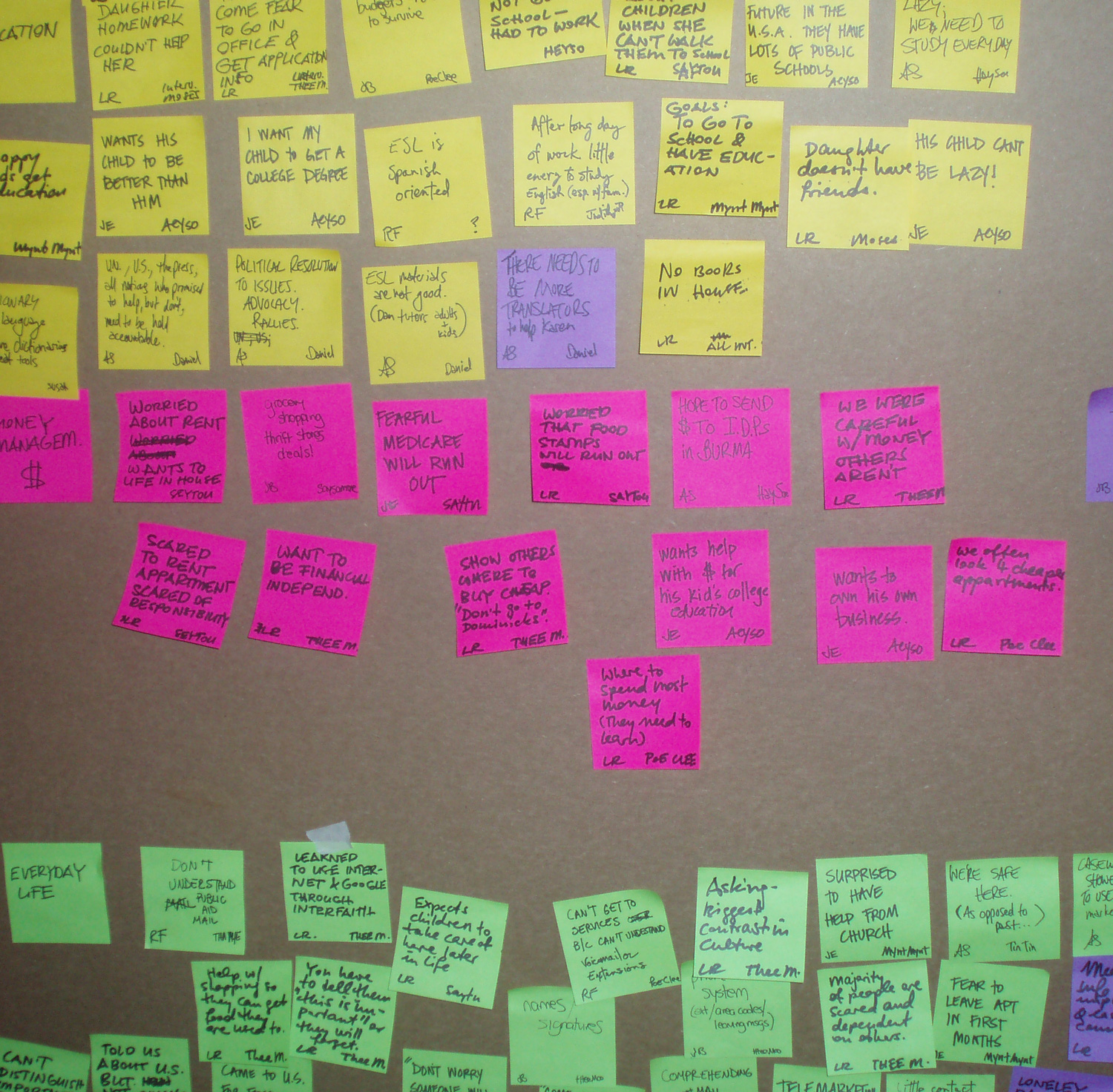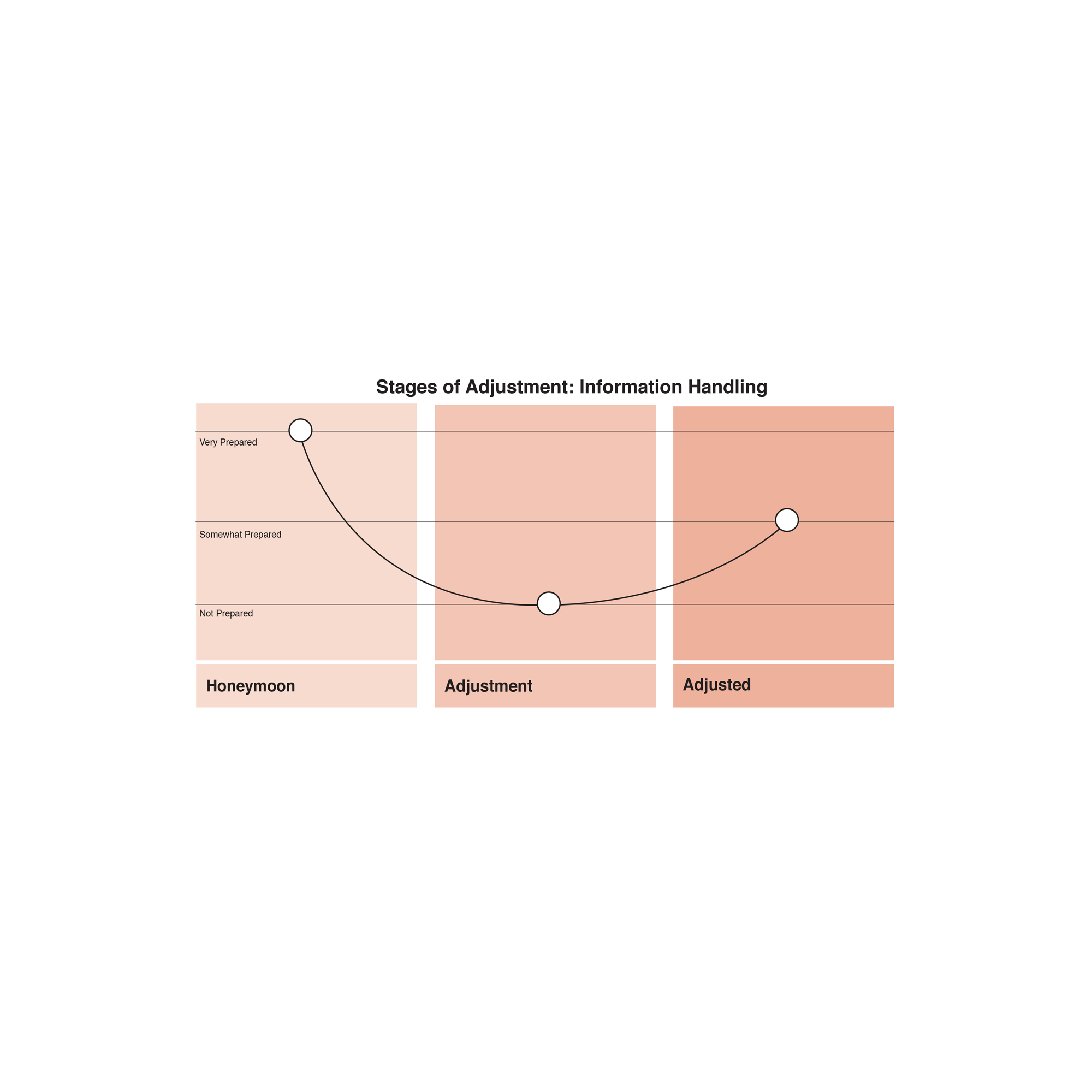
First Steps
Role : UX Design, Visual Design
Client : Sappi Ideas that Matters,
Exodus World Service
Tools : Illustrator / Photoshop / Indesign
Team : Rick Franklin, Joyce Epolito, Jenn Bricker, Aaron Sangha, Leilah Rampa
Refugees are invited by the U.S. government to resettle across the country. Most arrive with little or no English skills or knowledge of American culture, yet they are expected to be self sustaining in three to six months. In 2008 I led a group of three designers and two writers who won the Sappi Ideas That Matter grant for $25,000 to create orientation materials for newly arriving Karen refugees from Burma. We conducted UX research, synthesized, and created a ground-breaking kit of three orientation books for refugees based on informational needs during their stages of acclimation to life in the U.S.. The books have gone through several editions and translations, and have been successfully distributed across the country and Canada.
Process
We had 6 months to create a product, so we engaged a UX process of:
- Research
- Synthesis
- Ideation
- Prototyping
- Iteration
Deliverables
Research plan
User interviews
Problem statement
Design principles
Prototypes
Three books
Website
Topics
Through affinity mapping, we also saw 8 clear categories of information need emerge that became the basis for our information structure:
Housing
Transportation
Nutrition
Health Care/Safety
Money Management
Education
Employment
Culture
Relational Learning
Another key takeaway from our research was that the Karen were not a book-based culture, and many were not literate in their own language. They traditionally used oral transmission of information, and didn’t have an alphabet until around 1835 when missionaries applied the Burmese alphabet to Karen language. Coupling this with the insight that assimilation was most successful when immigrants were able to interact with natives of a country, it became clear that learning would best be accomplished in as visual a way as possible, and with the aid of teachers, case workers, or volunteers.
Problem Statements & Design Principles
From these insights we were able to draw two problem statements and design principles to guide our design. We determined:
There is a lack of basic, introductory bilingual information to inform / educate and encourage independence.
There is a lack of materials to use when existing and new volunteers
interact with refugees to help teach English and encourage independence.
We put together a set of seven design principles that help us ideate solutions to these problems:
Engagement
Commitment to engaging refugees’ learning of new material through contextualization and relevance of information
Choice
Communicating principles for making independent informed choices in the American context
Reinforcement
Using a variety of tools to communicate core messages
Relationship
Creating tools to foster relationships with American volunteers
Encouragement
Using a voice of encouragement to promote confidence
Time Relevance
Making information relevant to different stages of a refugee’s acclimation
Trust
Creating a way for given information to be trusted by refugees
Viewing the problem statements through our design principles guided us in creating a solution.
Constraints
Taking into account the research results and the Ideas That Matter grant, we were able to define a set of boundaries for the solution:
- We were constrained by the grant to create printed materials
- Refugees needed different information at different times based on the stages of acclimation
- The information needed to be as visual as possible because the Karen were not book users, and some were not literate in their own language
- Information needed to be presented bilingually, because it was best acquired relationally with a native of the U.S.
Micro Structure
I surveyed many different kinds of visual and education materials, from textbooks to popular magazines and from them I found a basic information pattern that met our goals. We assembled information that was:
- Organized in small chunks
- Paired with descriptive images
- Topically grouped
This pattern would help users find and learn what they needed to about particular topics easily, and it would help non-book users, who are not accustomed to linear arguments, intake information.

Macro Structure
Our research into the stages of acclimation led us to create a set of 3 books that mapped the appropriate information to each stage:
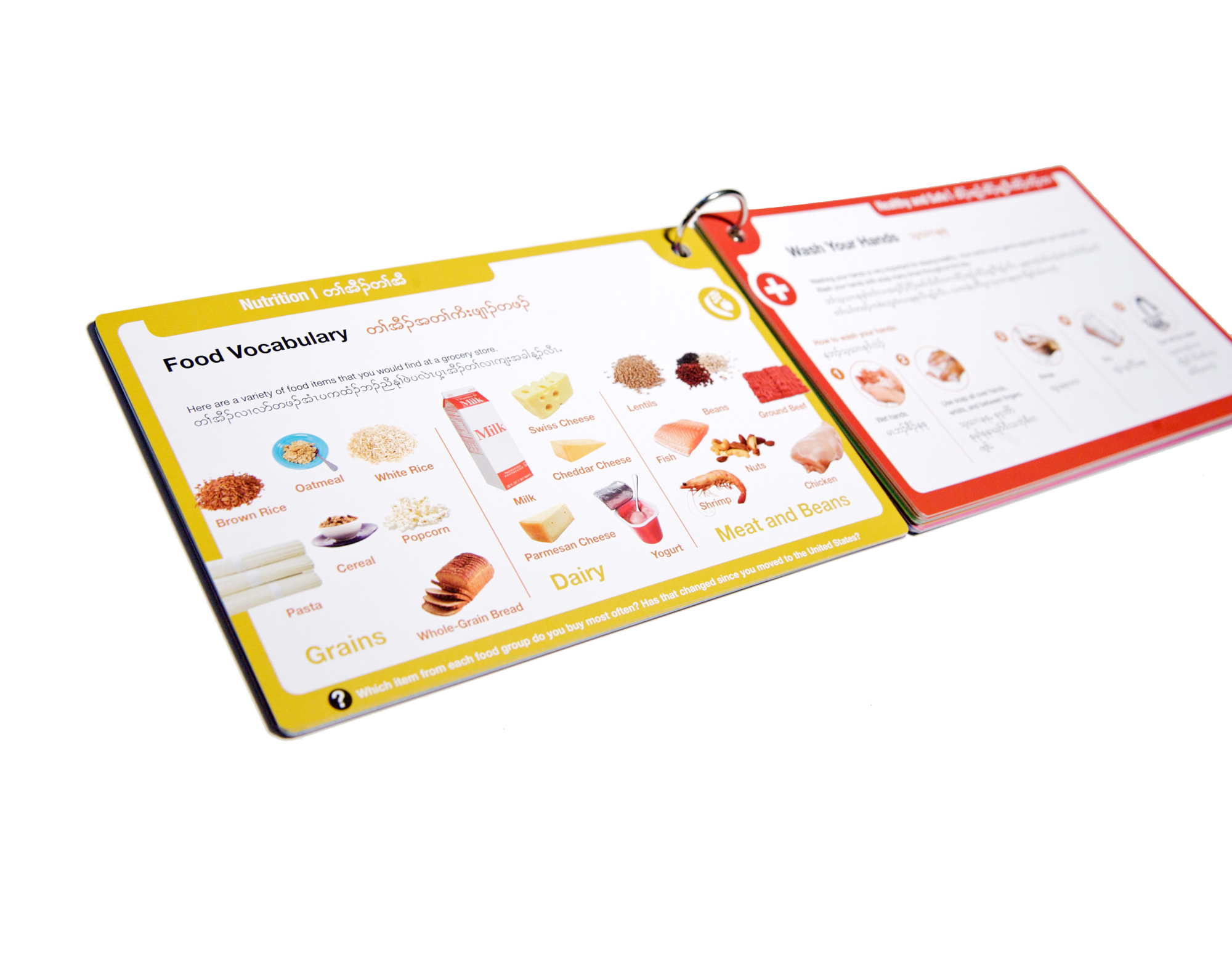
Ring-bound set of cards
Basic information is presented on large cards held together by a ring in the corner. This format is good for people who aren’t used to books because it has a “touch me” approach. It is designed so that people want to look at the cards as they slide and present themselves in their hand.
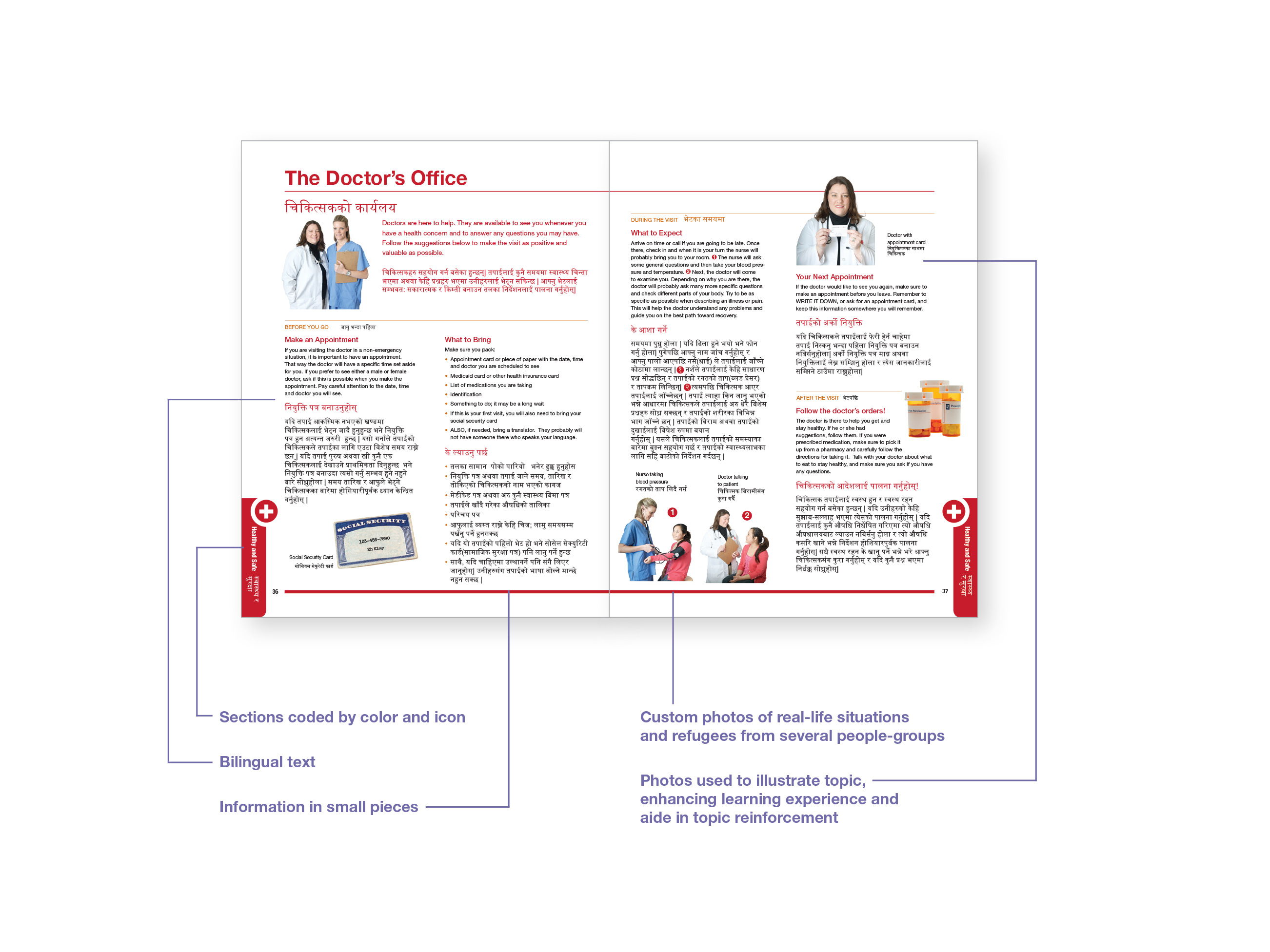
Information book
More complex information is presented in a contextualized, visual/tactile way. The book uses color and icons to show organization of information, and features colorful, descriptive imagery for each chunk of information.
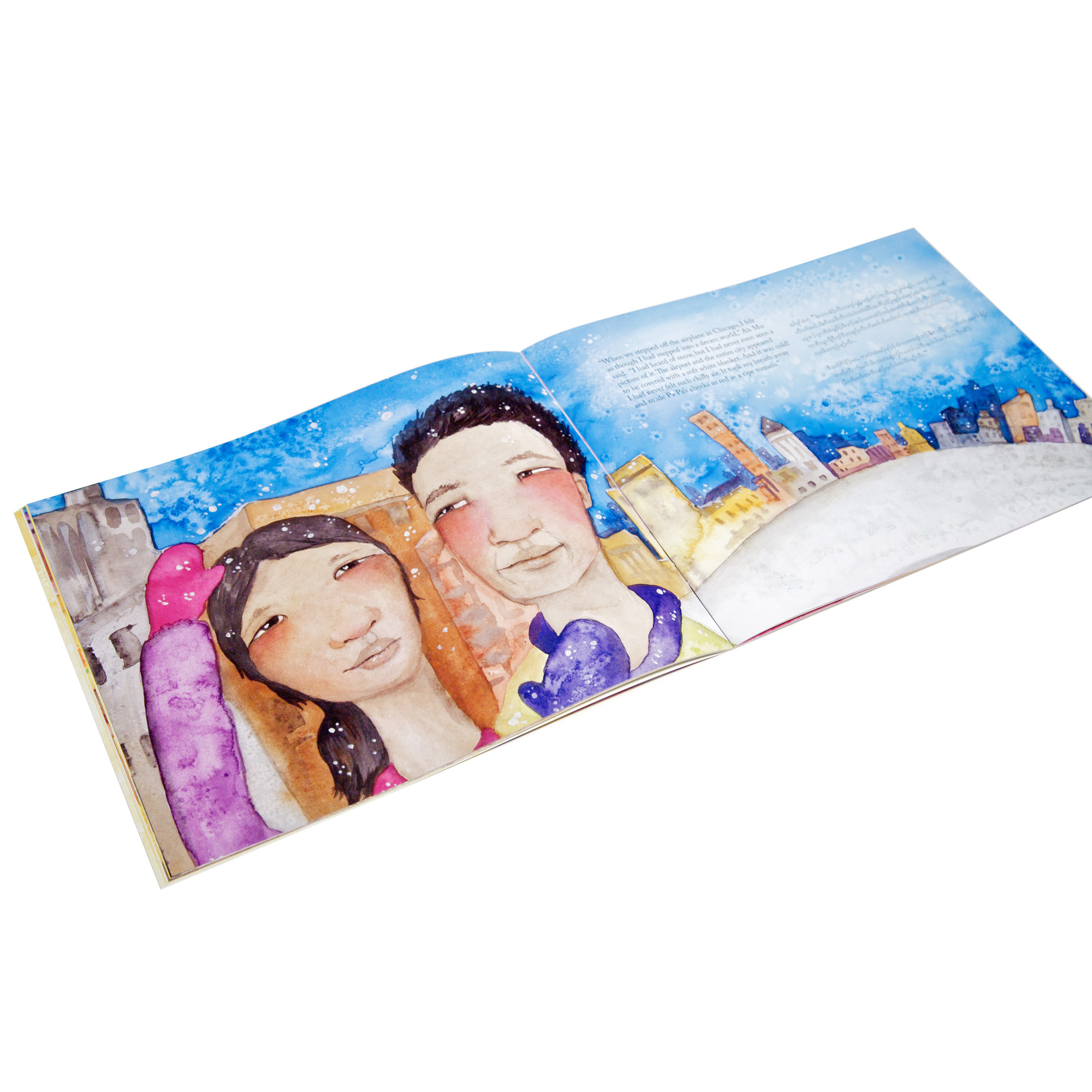
Illustrated narrative book
Cultural information needed for long-term assimilation is presented in narrative form. The book reinforces principles of choice, progress, and self advocacy through the story of a refugee family’s acclimation to life in the U.S. The story teaches core cultural values, like education, career progression, and the importance of assimilation.
User Feedback
We showed the concepts to our local Karen community and received feedback that they were helpful and understandable, so we proceeded with creation, including working closely with Karen translators who helped us refine the information and structure.
Once the product was printed and initially distributed, we gathered input on how the books were being used. We found that Karen families were being given the kit to keep in their homes, where it was either becoming a prized possession and put on a shelf for display, or was being used for mundane purposes, like as a mousepad.
Conversely we found that when the kit was used with English-speaking volunteers, it was a successful educational and relational tool. This feedback included home and classroom usage. Based on this, we strengthened our messaging to emphasize usage with an English-speaker, and we created a User Guide for volunteers and teachers that provided project background, information on the structure of the pieces, and activity ideas to do with Burmese refugees. This resulted in less kits being left in refugee homes, and more usage in the classroom, where they were more useful.
Final Thoughts
This was an incredible project to be a part of. It was my first exposure to the UX process, and through it I saw first-hand how UX design can successfully produce life-changing results. I also gained invaluable leadership experience through guiding and keeping a team of volunteers motivated to give most of their extra time for over a year.
The First Steps kit has been sold in over 30 states and Canada, has gone through multiple revisions and reprints, has been translated into Nepalese, and has been modified into an English-only version for use with refugees who are arriving in the United States from around the world. Its success and continued growth has been tangible proof that UX research and strategy can change our world. It was personally gratifying to give over a year and a half to the creation of the materials and building an infrastructure to keep it going. I am excited to see its growth continue.

